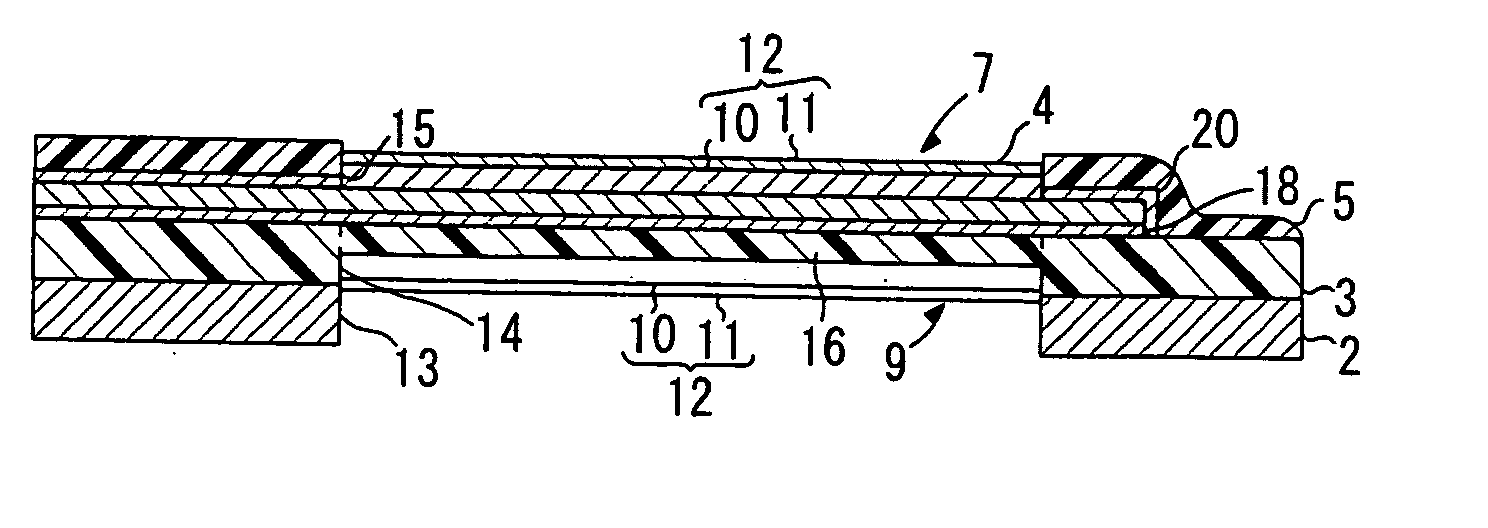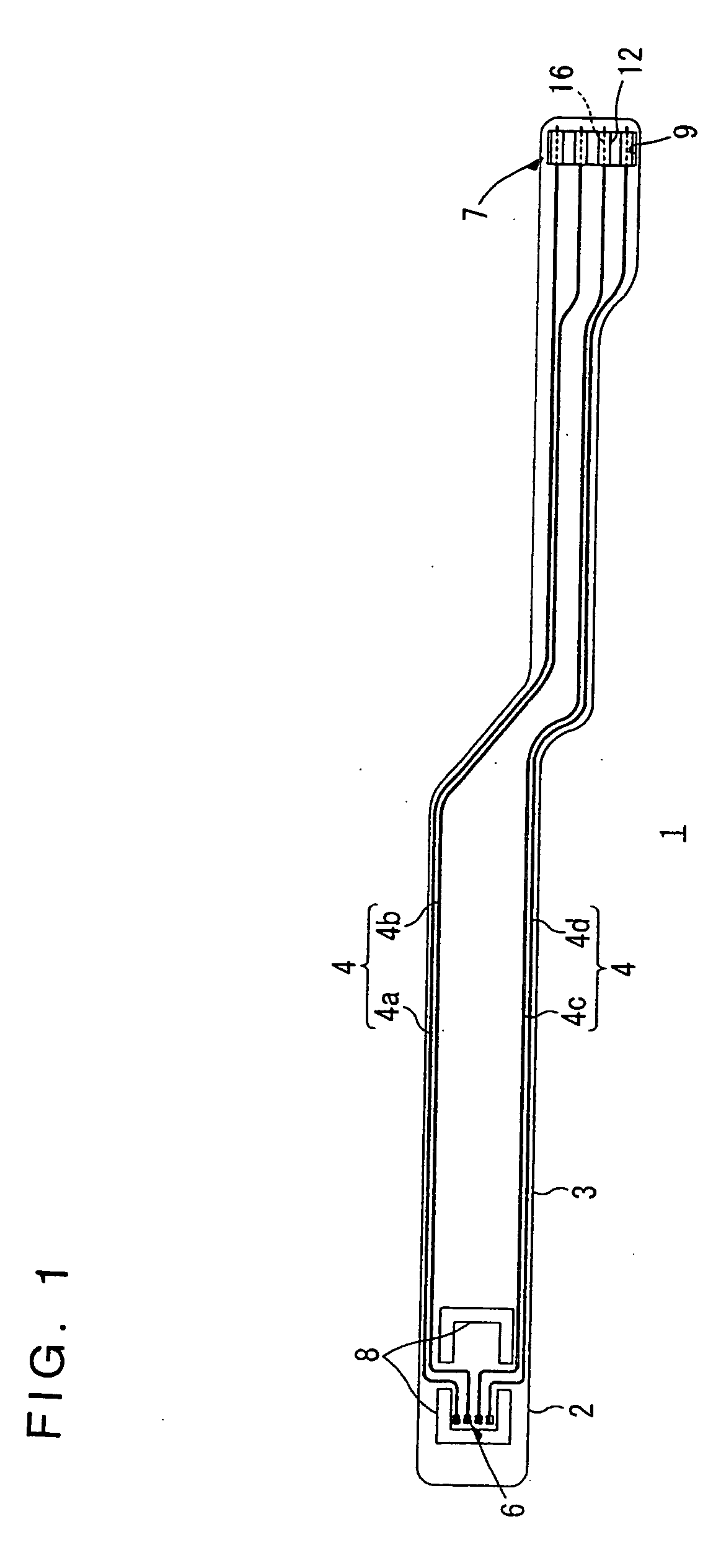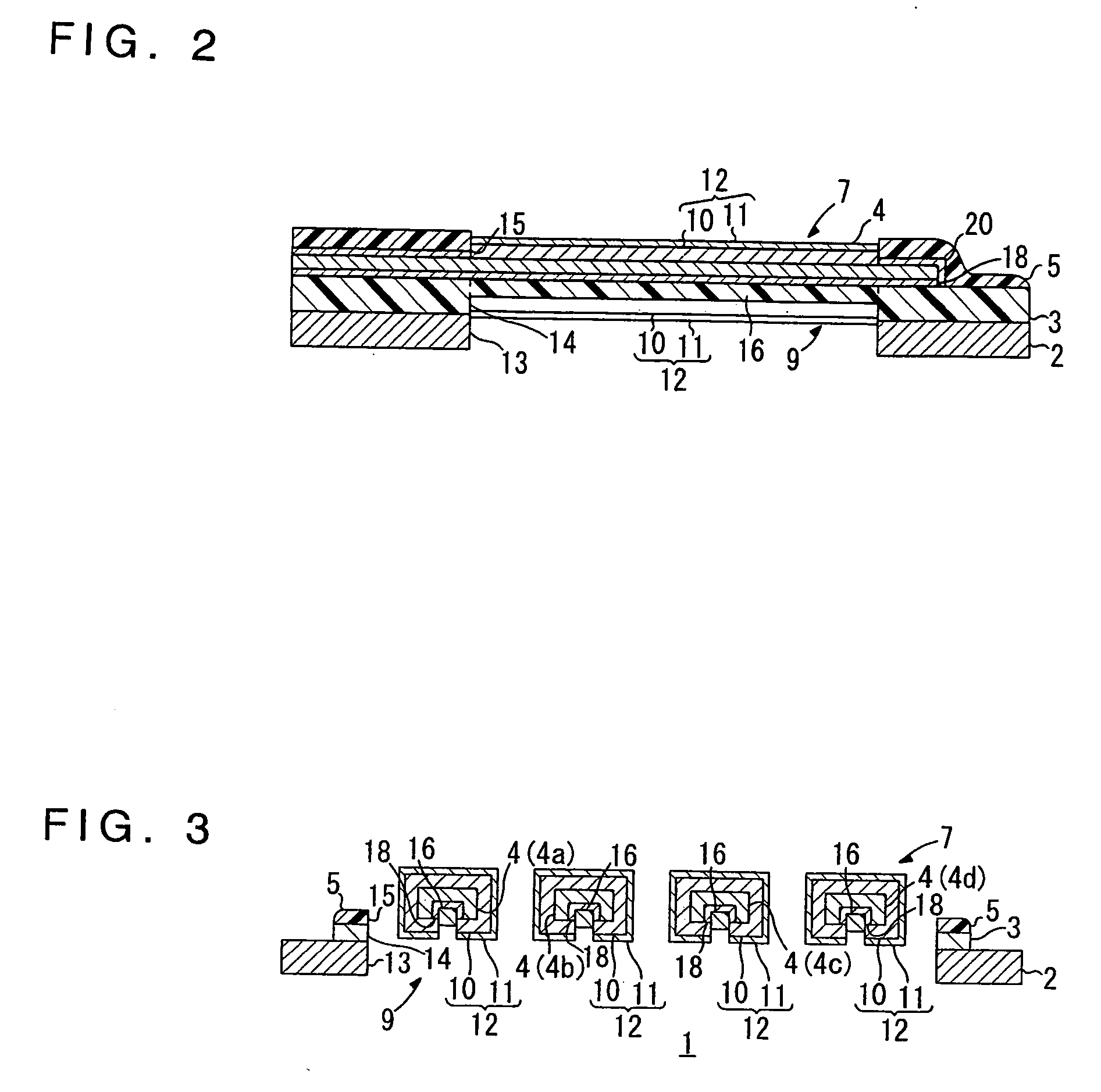Suspension board with circuit
a suspension board and circuit technology, applied in the direction of maintaining head carrier alignment, instruments, integrated arm assemblies, etc., can solve the problems of affecting the stability of the suspension board, the damage of the conductor layer and the pad portion exposed in the flying lead portion, and the damage of the conductor layer and the pad portion in the additive process, so as to reduce the risk of damage
- Summary
- Abstract
- Description
- Claims
- Application Information
AI Technical Summary
Benefits of technology
Problems solved by technology
Method used
Image
Examples
example 1
[0129] The following processes were carried out using a roll-to-roll process, to obtain a suspension board with circuit.
[0130] A supporting board of a stainless foil of 300 mm wide, 20 cm thick, and 120 m long was prepared (Cf. FIG. 4(a)). Then, after a solution of polyamic acid resin was coated over the entire surface of the supporting board, the coated resin was heated at 100° C., to form a coating of the polyamic acid resin having a thickness of 25 μm (Cf. FIG. 4(b)). Then, the coating thus formed was exposed to light of 720 mJ / cm2 through a gradation exposure mask comprising a light shielding part (whose light transmission is 0%), a semi-transparent part (whose light transmission is 50%), and a light transmission part (whose light transmission is 100%) and was heated at 180° C. Then, it was developed using alkaline developer (Cf. FIG. 4(c)). Thereafter, the coating was cured at a highest temperature of 420° C., whereby the insulating base layer of polyimide resin was formed wit...
example 2
[0140] The following processes were carried out using a roll-to-roll process, to obtain a suspension board with circuit.
[0141] A supporting board of a stainless foil of 300 mm wide, 20 μm thick, and 120 m long was prepared (Cf FIG. 10(a)). Then, after a solution of polyamic acid resin was coated over the entire surface of the supporting board, the coated resin was heated at 100° C., to form a coating of the polyamic acid resin having a thickness of 25 μm (Cf. FIG. 10(b)). Then, the coating thus formed was exposed to light of 720 mJ / cm2 through a photo mask and was heated at 180° C. Then, it was developed using alkaline developer (Cf FIG. 10(c)). Thereafter, the coating was cured at a highest temperature of 420° C., whereby the insulating base layer of polyimide resin was formed with a predetermined pattern (Cf FIG. 10(d)). The thickness of the insulating base layer thus formed was 10 μm.
[0142] Sequentially, a thin chromium film having a thickness of 400 Å and a thin copper film ha...
PUM
| Property | Measurement | Unit |
|---|---|---|
| width | aaaaa | aaaaa |
| width | aaaaa | aaaaa |
| width | aaaaa | aaaaa |
Abstract
Description
Claims
Application Information
 Login to View More
Login to View More - R&D
- Intellectual Property
- Life Sciences
- Materials
- Tech Scout
- Unparalleled Data Quality
- Higher Quality Content
- 60% Fewer Hallucinations
Browse by: Latest US Patents, China's latest patents, Technical Efficacy Thesaurus, Application Domain, Technology Topic, Popular Technical Reports.
© 2025 PatSnap. All rights reserved.Legal|Privacy policy|Modern Slavery Act Transparency Statement|Sitemap|About US| Contact US: help@patsnap.com



